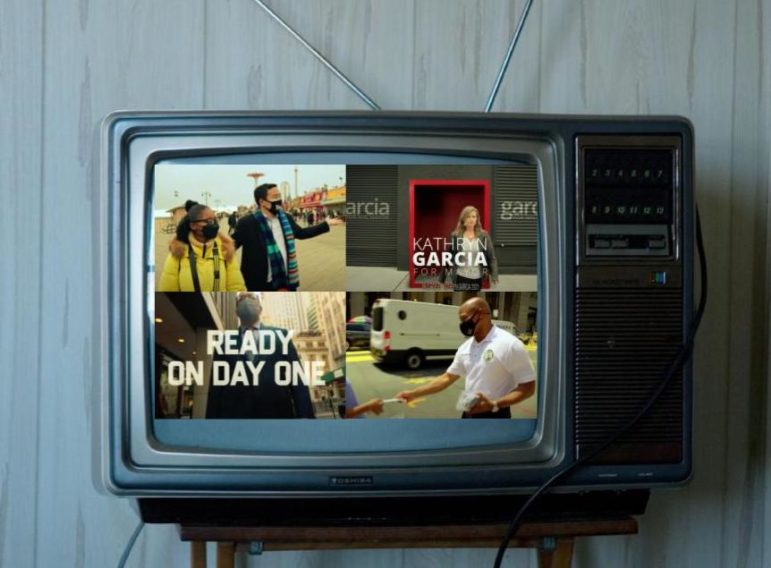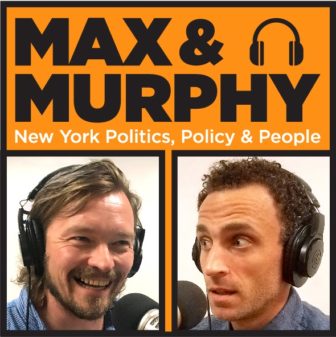A veteran political operator says the 2021 race is about to get very real for New Yorkers—in person and, most crucially, on television.

dailyinvention/campaigns
By early 2014, when Bill de Blasio began his expected two terms as mayor, the 2021 mayoral race had begun taking shape in the minds and machinations of some of this year’s candidates. Fundraising has officially been going on since Jan. 12, 2018, when a woman named Margaret Ritchie donated $5 to Scott Stringer in the first recorded contribution of this mayoral cycle. It’s been almost 17 months since one of the top candidates, Ruben Diaz Jr., dropped out. The first of dozens of mayoral forums took place last October. Journalists, consultants and political junkies have been thinking about the contest for so long that the names of the main competitors roll off the tongue like the points of the Scout Law.
But only now, with less than five weeks to primary day, is the race going to become a real thing for most New Yorkers, or at least most likely voters. Because only now are candidates really getting serious about the thing that matters most in every campaign: television.
“I think we’re kind of entering this home stretch where I think a lot could start to move,” Jonathan Rosen, the principal and co-founder at the public relations and political consultancy Berlin Rosen, told WBAI’s Max & Murphy Show on Wednesday. “Despite all the money being spent in this race – I don’t think we’ve ever had this many independent expenditures and this many candidates who are raising real money – very few of them are yet up in any meaningful way on broadcast television.”
“I think we’re kind of hitting this point where the lights in the stadium are going to come on in a really big way next week and voters are going to be like ‘Oh, there’s a mayor’s race happening!’” Rosen continued.
TV is important, but also very expensive. “It does really create a calculus for most campaigns to not start spending money in any real way until this week, next week,” Rosen said. “I think the question for some candidates is, are they going to have enough money to compete?”
The sheer number of major candidates means viewers could start to get sick of ads pretty quick. “It’s going to require campaigns to be creative and eye-catching and have a real rationale” to stand out, Rosen says.
If anything, TV will be more important this year because COVID-19 restrictions have prevented many of the in-person events that campaigns usually hold. Those prohibitions are being lifted as the primary race heads into its home stretch, but there are practical limits to how many hands any candidate can shake or how many doors volunteers can bang on over the 23 days between now and the start of early voting or the 33 days before Primary Day.
“Yes we are going to have the ability to do in-person street campaigning. But New York City is too big for field [operations] in a real way in four or five weeks,” Rosen says. Digital ads are increasingly important. But, he adds, “I still think you have to show up on TV.”
Polls by different entities applying unique methods appear to indicate a fluid race, with many voters undecided. A consistent theme across surveys, however, is that Andrew Yang and Eric Adams are vying for the lead, with Stringer somewhere behind them. In recent weeks Kathryn Garcia appears to have moved up. The shape of the rest of the field has been harder to discern, with Dianne Morales, Maya Wiley and Shaun Donovan showing glimpses of strength in some surveys and falling back into the lower single digits in others. Despite an impressive resume, celebrity endorsements and a strong financial position, Ray McGuire has yet to break through in any poll except a March survey by Crain’s.
Rosen was part of one of the most famous comeback victories in New York City political history in 2013, in which de Blasio rose from a distant fourth place in the polls to winning the primary. That late break is a cautionary tale for those who would declare the dynamics of an election to be settled weeks before the votes are counted. However, even by the 2013 yardstick, trailing candidates are running out of time. By around this point in the ’13 race—on Aug. 13 of that year, 28 days before the primary—de Blasio had already taken the lead.
“Our campaign’s theme song could have been, ‘Started from the bottom, now we here,’” Rosen jokes. “But yeah, it’s getting late. I think for McGuire, Morales and Donovan, it’s getting very late. They would need a real change in the shape of the race, the narrative, a real change in the rationale.”
Hear our conversation below, or listen to your hosts break down some of the down-ballot races that would make the 2021 campaign both interesting and important even if there weren’t a tight Democratic mayor’s race:









